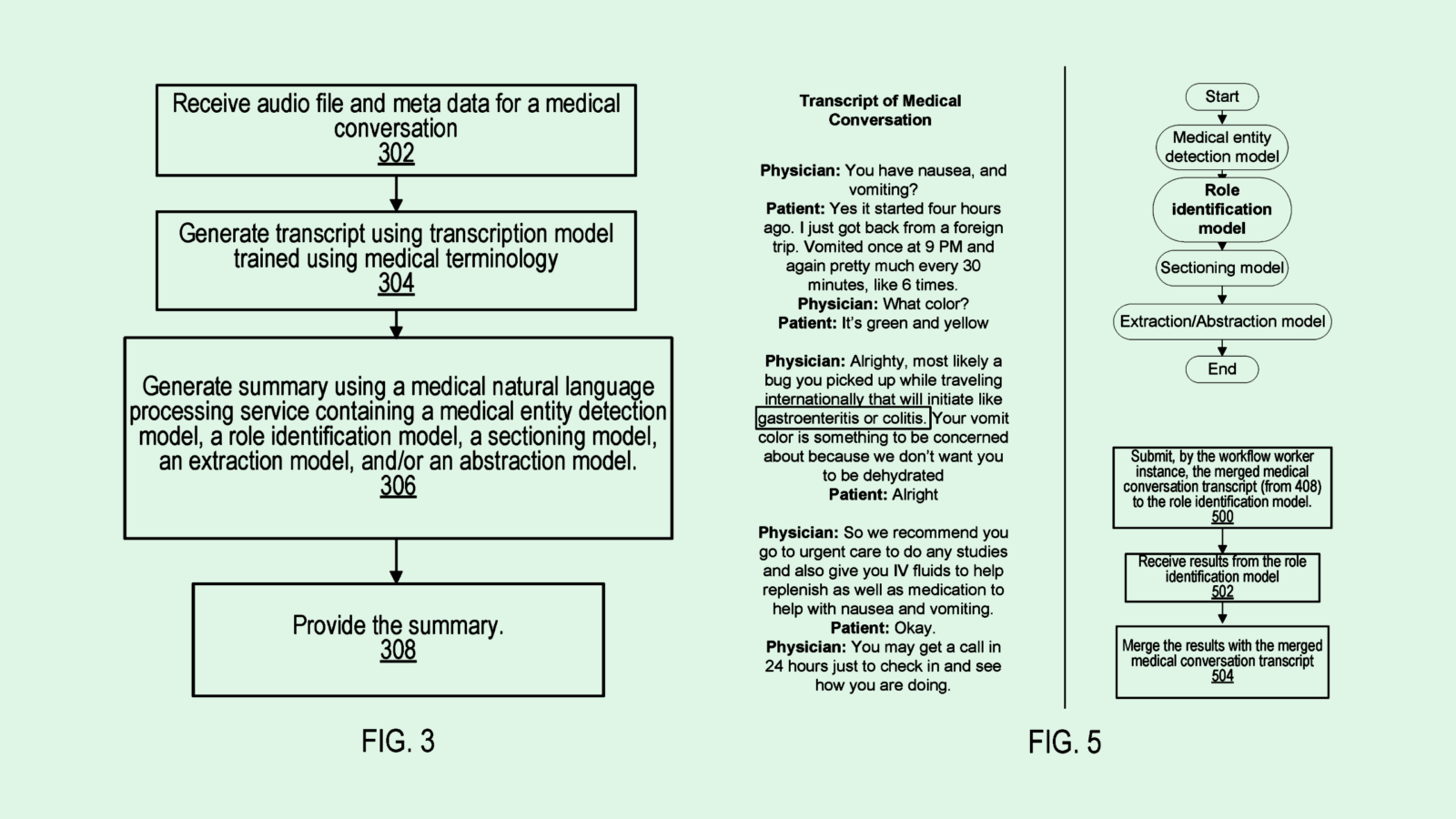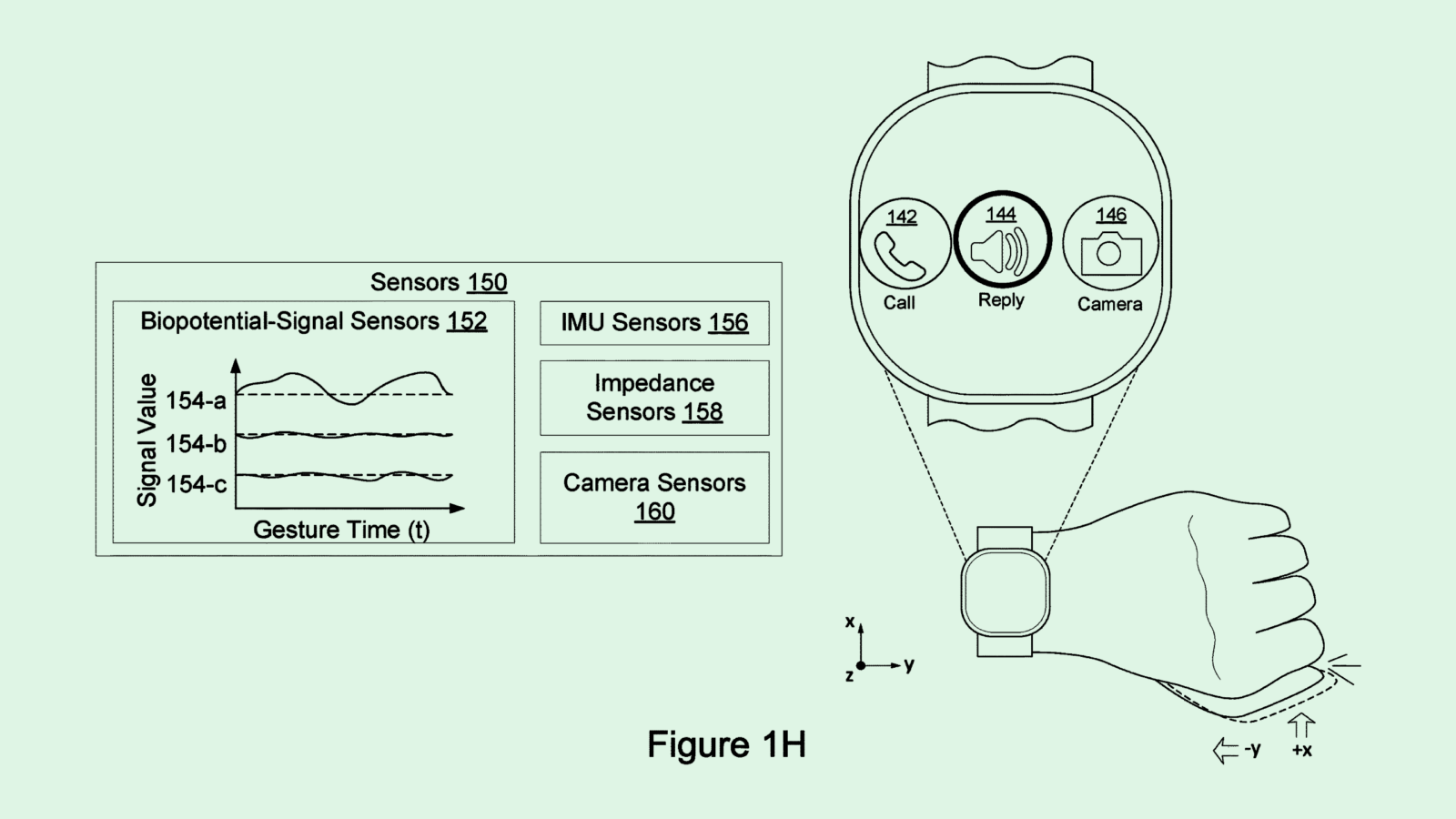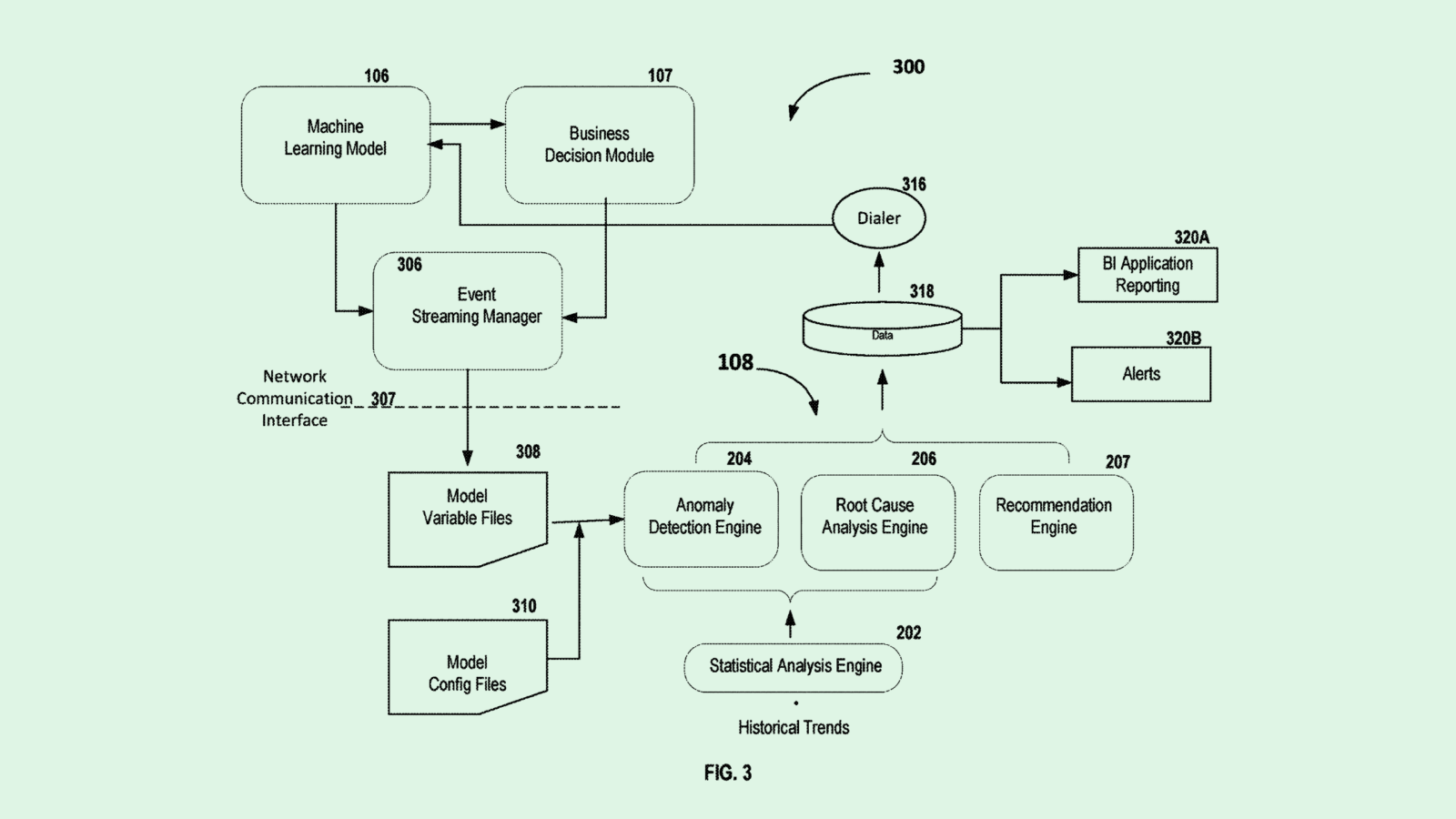Happy Monday and welcome to Patent Drop!
Today, Amazon’s patent to help doctors take better notes highlights the company’s massive bet on the healthcare space — and how AI may fit in. Plus: Meta wants to read your “biopotential” signals, and JPMorgan Chase wants to make sure its AI is working properly.
Let’s get into it.
Amazon’s Physician’s Assistant
Amazon wants to make your doctor’s life a little easier.
The company filed a patent application for what it calls “medical conversational intelligence.” Amazon’s tech uses machine learning to provide accurate summaries of medical visits in real time.
“The burden of documenting clinical visits is one of the largest sources of inefficiency in healthcare,” Amazon said in the filing. “Current machine learning models are not well suited to the nuanced tasks of generating summaries of medical conversations.”
To start, Amazon’s system listens in on a visit between a patient and provider to gather audio data as well as relevant metadata, such as time, date, and patient information. Then, Amazon’s model, trained specifically to understand medical terms, creates a highly accurate transcript of the conversation.
That transcript is given to a “natural language processing service” to be summarized. This service includes several AI models that each serve different purposes: one identifies important medical terms, such as drugs or conditions brought up; another determines the speaker roles; a third picks out relevant sections or phrases; and a fourth paraphrases those relevant sections.
Notably, Amazon said this tech “may provide a HIPAA-eligible conversational intelligence,” overcoming a major issue that medical AI tools face in the US, though it didn’t explicitly explain how — or even what, exactly, that means.

Though this patent itself isn’t particularly novel, it makes sense why Amazon may want to claim possession over its version of this tech. For the last several years, the company has been “pounding on healthcare from every angle,” said Bob Rogers, Ph.D., the co-founder of BeeKeeperAI and CEO of Oii.ai.
The biggest example of this is Amazon’s acquisition of One Medical, a $3.9 billion buyout that closed last February. The company bought online pharmacy PillPack in 2018 for just under $1 billion, launched its own online pharmacy in November 2020, and has partnerships with a number of hospitals and healthcare systems.
There are a couple of reasons Amazon may be so insistent on staking its claim in the healthcare market, said Rogers. For one, the healthcare industry represents around 17.6% of US GDP, and could reach nearly 20% in the next decade. “That is such a big number that Amazon cannot ignore it,” said Rogers.
But the company’s AI prowess could allow it to build powerful models that revolutionize patient care, said Rogers. AI could make it possible for patient care to be “outcome-driven,” he said, predicting and quantifying the best possible results to plan patient care and treatments.
“If they have access to enough data — real data on patient care histories and the interactions — they could actually build very compelling models of diagnostic and treatment flows for patients,” Rogers said.
However, with great power comes great responsibility… and regulation. HIPAA makes it incredibly difficult for any innovation to happen with patient healthcare data. And given that large language models have a bit of a problem with “absorbing private data and then coughing it up again, you have to really control how you deploy these things,” said Rogers.
Meta’s Gesture-Reader
Meta wants to take the friction out of artificial reality.
The tech firm is seeking to patent what it calls an “easy-to-remember interaction model” for using artificial reality headsets, relying on in-air hand gestures for control. Meta’s tech tracks “biopotential signals” from a user’s movements and body to interpret gesture data with higher accuracy.
“Techniques for interacting with wearable electronic devices can be cumbersome and/or impractical at least because they cause inefficient use of computing resources and/or energy capacity at the wearable electronic devices,” Meta said in the filing.
Meta’s patent details a system that uses both an artificial reality headset and a wrist-worn device, such as a smart watch, to more easily track a set of gestures used to control an AR environment.
These devices use internal sensors to track biopotential signals. While, in the patent, these are primarily referring to neuromuscular signals in the wrist, the filing noted that biopotential signals could include a wide swath of metrics, including those that read brain or heart activity.
Using these signals (rather than relying on gesture recognition via cameras on the AR devices themselves) could make interacting with these devices more efficient and intuitive.

This patent falls in line with several we’ve seen from Meta lately, such as filings for smart watch health tracking and blood pressure monitoring, as well as AR environmental control using a wrist-worn device.
It also lines up with Meta’s recent debut of Project Orion — its long-awaited “first true augmented reality glasses” — at Meta Connect in September. In the demo, these glasses were controlled with a “neural” wristband; it’s similar to what’s seen throughout its patents, but missing a screen.
“The value of that is the convenience,” said DJ Smith, co-founder and chief creative officer at The Glimpse Group. “You don’t have to hold your hand up, there’s efficiency in movements.”
However, “the bad side of it is, this is still another thing that the person has to go and attach to their body,” he added. While it aims to take away friction, it may do the opposite by creating an additional device that a consumer needs to consider, he said. “Extra hindrances” could make consumers hesitant.
While wrist-worn controllers may be the next frontier of AR technology, he said, they’re likely not the end goal. These devices are probably moving toward better sensors and tracking within the headset itself, such as the brain wave or “neural signal” tracking that we’ve seen in previous filings.
“I think it all goes back to what is the best user experience,” said Smith. “The trends are very, very clear. I’m sure that as these sensors get more popular in different use cases, their capabilities are going to continue to expand over time.”
Regulation, however, may already be preparing for that reality: Both California and Colorado have passed laws this year that classify “neural data” as protected personal information, restricting tech firms’ access and allowing customers to opt out of this data collection.
JPMorgan’s Anomaly Detection
As JPMorgan Chase plows ahead with AI integrations, it may be eyeing some guardrails.
The financial firm filed a patent application for “determining machine learning model anomalies” and their impacts on business outputs. JPMorgan’s tech aims to track when an AI model may be going off the rails, and how wide of an effect that deviation could have.
“Because the typical enterprise deploys hundreds of machine learning models, it can be difficult, time consuming and daunting to evaluate each and every machine learning model deployed by the enterprise,” the bank said in its filing.
This system uses statistical analysis to track machine learning model behavior in real time, monitoring outputs in certain time windows and comparing them to previous equivalent time windows to determine drift.
For example, it may track outputs such as “fraud probability scores, business approval/decline decisions, the number of money movement transactions in a given window, model drift data,” and more by comparing them on one given week to the previous week, the company noted.
If the system determines the model’s performance has deviated too far from normal, it may track down the business impacts of that anomaly, as well as its root cause, and notify an operator to fix it.

JPMorgan has jumped headfirst into AI. The company’s patent history is packed with AI inventions, seeking rights over things like personal finance tools, bias detection, volatility prediction and more.
Its public commitment to the tech matches its fervor for AI IP. The company has debuted several tools in the past year that rely on AI to handle things like cash flow management and thematic investing, rolled out an AI assistant called LLM Suite to 60,000 employees, and promised to train every new hire on AI.
But with the firm’s excitement and the sheer speed at which it’s adopting AI comes several potential risks: A primary one is hallucination and inaccuracies. As this patent addresses, AI models have the tendency to make mistakes and, if those mistakes are unaccounted for, can exponentially grow them.
JPMorgan appears to be seeking its own way to control those risks, as well as assess the damage that’s been done, as it continues to step on the gas with AI adoption. Given that AI systems can’t always be 100% accurate, observing when they drift could mitigate a lot of harm, especially given the scope of customers that the financial institution serves.
Extra Drops
- Adobe wants to help companies go green. The tech firm filed a patent application for machine learning to “efficiently promote eco-friendly products.”
- Airbus wants to know when you’re coming in hot. The company filed a patent application for “detecting a hard landing.”
- Electronic Arts wants to make sure you’re playing fair. The game developer filed a patent for “detecting anomalous gameplay” in video games.
What Else is New?
- Comcast said the data of more than 230,000 customers was stolen in a ransomware attack on a third-party debt collection agency.
- Apple is reportedly releasing Apple Intelligence on October 28, with additional features coming in subsequent iOS updates.
- EV startup Lucid Motors saw record sales for the third quarter in a row, delivering 2,781 vehicles in during the period.
Patent Drop is written by Nat Rubio-Licht. You can find them on Twitter @natrubio__.
Patent Drop is a publication of The Daily Upside. For any questions or comments, feel free to contact us at patentdrop@thedailyupside.com.
